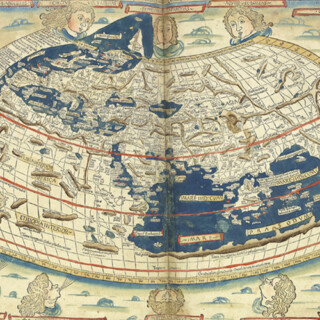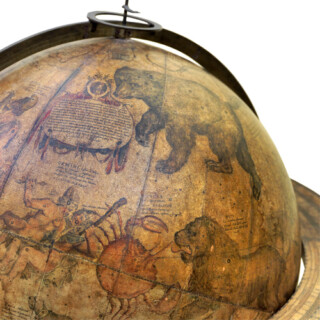Plan du chateau, Jardin et Parc de Wilton la Terre du Comte de Pembroke/ An Exact Survey of the Beautiful & Magnificent House, Garden & Park of the Right Hon.ble, the Earl of Pembroke.
With the Ancient Town of Wilton 3 Miles from Salisbury.
[London],
Printed for Rob.t Sayer, No.53 Fleet Street,
1754 [but c.1770].
Engraved map with six inset vignettes, tiny tears to left margin, including small loss to bottom left corner, without affecting image.
345 by 555mm (13.5 by 21.75 inches).
23968
notes:
An elaborate plan of Wilton Estate, the famous landscaped parkland that would later attract Hollywood directors.
Showing Wilton House nestled in its extensive gardens, as well as the park and nearby town of Wilton. The locations of the fish pond, kitchens, and even the May Pole are indicated. Vignette insets offer views of the Manor House, Great Bridge, Porters Lodge, and Arcade. One inset reveals a plan of the first story of the house, including the Great Hall, ...
Showing Wilton House nestled in its extensive gardens, as well as the park and nearby town of Wilton. The locations of the fish pond, kitchens, and even the May Pole are indicated. Vignette insets offer views of the Manor House, Great Bridge, Porters Lodge, and Arcade. One inset reveals a plan of the first story of the house, including the Great Hall, ...
bibliography:
BL Maps, K.Top.43.41.b; Map Forum, fifth issue (2022), 'Biography: John Rocque', no.81; Yale Centre for British Art, Folio A G 14 and Folio B G 4.
provenance:








